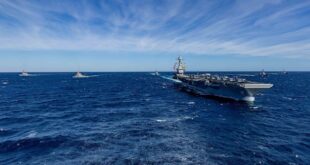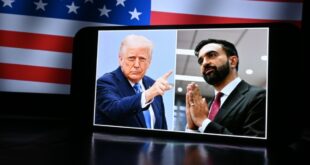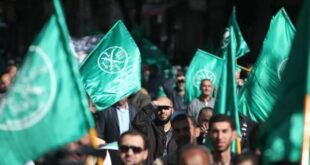The Iran nuclear deal was indeed a turning point in the balance of power in the Middle East. The impact of the deal was two folded. In reality, it gave Iran the opportunity to freeze its march towards a nuclear weapon for some 15 years, at best, in return for normalized international relations. It also freed it from the heavy chains of the sanctions, provided its coffers with substantial funds and injected its political establishment with self-confidence and confirmed that defiance and disrespect of international norms can indeed pay back generously.
And in perceptions, the nuclear deal magnified the prior impression that the US is pulling out of the region. The deal was indeed preceded by the decrease of US regional engagement. This context helped frame the Arab perception that the US took the side of Iran and that it abandoned its traditional allies in the region.
We saw some half-baked theories about the US working with Iran in the post nuclear deal Middle East. We also saw other theories exaggerating the impact of the deal on the positions of the moderates in Tehran and how it will help Rouhani. However, things went in a different direction.
Iran chose, after signing the deal, a more aggressive regional policy and a higher ceiling for its regional ambitions. Why were these erroneous assumptions of a cooperative Iran so far from apart from what really happened?
One of the reasons may have stemmed from a profoundly misconceived reading of Iran’s pre-deal intentions and the planned role of the nuclear program in its strategic trajectory in the Middle East.
Iran did not have any intentions, before or after the deal, neither to change its regional behavior nor to coordinate its policies with the US. Assuming that Iran’s intentions could be modified by the deal was totally out of context. The right assumption should have been that Iran’s aggressiveness will increase, rather than decrease, after the deal.
In any case, this situation resulted in a problem for both the US and the Arabs. The US, as a result of the prior strategy of reducing exposures to Middle East crisis and as a consequence of the nuclear deal managed to reduce its regional leverage to a worrying level. We wrote in “Middle East Briefing” just few months before signing the deal that the “US is Losing the Arabs and Not Winning the Iranians” (MEB-March 30 2015). We wanted to point out the dangerous levels of a reduced US influence in the region at that point.
However, the deal was signed anyway. In itself, the deal may not be objectionable as we said over and over again. Yet, it was precisely the link between signing the deal and its consequences on the one hand and Tehran’s regional strategy on the other that was worrying.
Therefore, the deal produced a context in which Iran was increasing its regional aggressiveness, the US was reducing its leverage and waiting for a gesture from Tehran expressing willingness to coordinate and the Arabs were feeling abandoned by their traditional ally. This configuration was pregnant with problems. Soon, a major problem on the ground appeared: Tehran’s invitation to President Vladimir Putin to go to Syria, then potentially to Iraq. It was clear that the regional agenda was being prepared for a leading role to be played by both Iran and Russia, in a moment of a voluntary self-imposed decision by the US to reduce its regional involvement.
The whole picture was ironic. While the US hoped that the nuclear deal will increase its regional leverage and reduce that of Russia, Mr. Putin, invited by Iran, was moving in the opposite direction.
In a way, the nuclear deal was a cross roads for the Middle East as viewed by the both the US and Russia. But now, the US is getting back gradually and cautiously to the Middle East. Reality was actively dismantling wishful thinking and idealist strategies.
With the picture of the post nuclear deal Middle East almost clear now, a platform is set for a stronger US-Arab coordination. This platform could be summarized in two words: containing Iran. The balance of power, understood in its concrete manifestation at this point in time in the Middle East, is playing out in Syria and Iraq. And in Syria and Iraq it should be set in order to spare the region future Iranian subversion.
For those who say that Iran is doing nothing “subversive” in the region, we would simply ask why did the Iranians infiltrate Iraq after the US invasion and killed both Americans and Iraqis to manipulate the political theatre in their favor? We will ask about terrorist rings arrested in Kuwait, Bahrain and Saudi Arabia? We will ask about ships carrying arms to the Houthis in Yemen spotted and stopped off the Yemeni shores. We will also ask about IRGC in Lebanon, Syria and Bahrain. This is not tourism. It is subversion and terrorism.
The regional balance of power is now defined by the battle for Syria. Syria is where Russia, the US, Iran, the Arabs and Turkey are “testing” their abilities to shape the regional dynamics. The situation some 10-15 years ago was different. Then, it was only the US and the Arabs that were shaping these dynamics. The change was mainly due to three factors. The first is the earth quake of 2011 which seriously damaged the regional security order. The second is the progress Iran achieved in building both asymmetric warfare capabilities and military capabilities. And the third was the gradual reduction of the US regional role.
It is in Syria and Iraq that Iran should learn that its bridge to the region should be defined by trade, development and cooperation to build a joint regional future for all its countries instead of asymmetric warfare, subversion and intervention to bring about more disasters like those suffered by both Syria and Iraq.
And it is in Syria and Iraq that the Middle East balance of power will be recalibrated. For those who still believe a moderate Iran is possible, we simply say that they are on for more bad surprises. Iran is not being transformed into a less aggressive power. In the contrary, it is being transformed into a more aggressive power after the nuclear deal. And to help reshape Iran’s regional policies, it has to know that its subversion will bring only troubles to both its political establishment and people. Unfortunately, there is no other way to convince the IRGC to do anything differently. In fact, regional peace is in total opposition to the nature and “raison d’etre” of the Quds Brigades of Mr. Suleimani. If there would be regional peace, the most active component of the IRGC would be no more. What exactly could motivate the IRGC to seek stability and peace in the region? In fact, its Commanders main worry after signing the nuclear deal was that Tehran may be pushed to a more constructive regional role.
The US and the Arab countries have to rebuild their regional strategies and their working relations in order to teach the Iranians the one simple fact that they do not seem to understand: The Arab World is not Persian and attempts to make it Persian have a high price.
US – Arab working relations must not be reduced to arms deals. This is a prescription for more troubles. If Iran would not stop interfering and inviting other Putins to interfere, the regional crisis will be a black hole in the world order. Europe pre First World War should be avoided now in the Middle East. And to avoid it, Iran has to understand what it still does not. Clear measures should be publicly discussed to explain to the Iranians that their actions may cost them a high price. It is by talking loudly about this price that the world will discourage the Iranian people not to listen to the fanatics’ discourse. Both the international community and the Iranian people are putting the Middle East is a great risk if they believe the sugar coated statements of Tehran’s diplomats and some politicians. What counts is actions. And in actions, it says a lot to see Mr. Suleimani travelling in the region as if it has already been annexed to the illusive hallucination of the “Great Persian Empire” resurrected from ashes.
 Geostrategic Media Political Commentary, Analysis, Security, Defense
Geostrategic Media Political Commentary, Analysis, Security, Defense





